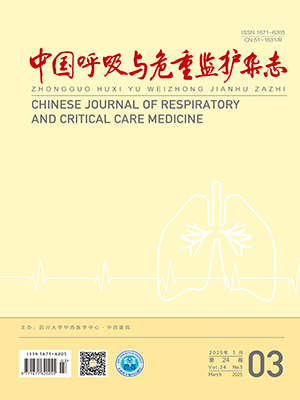Objective To compare three approaches of lipopolysaccharides ( LPS) administration for inducing acute lung injury ( ALI) in mice.
Methods LPS ( 5 mg/kg) was intratracheally aerosol administered ( ITA group) , intratracheally instilled ( ITI group) , or intraperitoneally injected ( IPI group) to induce ALI in BLAB/ c mice. Evans Blue instead of LPS was intratracheally administered to observe the liquid distribution in the lungs. Two hours after LPS administration, the mice were sacrificed and the lungs were removed to determine wet-to-dry lung weight ratio ( W/D) , and the histological changes were evaluated by HE staining. Phosphorylation level of IκB-αand NF-κB p65 in lung tissue were investigated by Western blot. Transcription intensity of TNF-α and IL-1β mRNA in lung tissue were detected by real-time quantitative PCR.
Results Evans Blue distributed more uniformly in the ITA group than the ITI group. The lung W/D ratio and histological changes score in three LPS administration groups were all significantly higher than the normal control group ( P lt;0. 01) , with the ITA group being the highest. The phosphorylation levels of IκB-αand NF-κB p65 were significantly higher in the ITA group than the ITI group ( P lt;0. 05) , and were significantly higher in the ITI group than the IPI group ( P lt; 0. 05) . Transcription intensity of TNF-αand IL-1βmRNA was significantly higher in the ITA group than the ITI group ( P lt;0. 05) , and were significantly higher in the ITI group than the IPI group ( P lt;0. 05) .
Conclusion Being non-invasive and convenient,intratracheal LPS aerosol inhalation is an optimal method to induce ALI in mice because it induces more extensive and uniformly distributed injuries in lung.
Citation: HUANG Jianhua,LI Li,YUAN Weifeng,LI Weifeng,HUANG Wenjie.. Comparison of Three Mouse Models of Acute Lung Injury Induced by Different Administration of Lipopolysaccharides. Chinese Journal of Respiratory and Critical Care Medicine, 2013, 12(3): 264-268. doi: 10 . 7507 /1671 -6205 . 20130063 Copy
Copyright © the editorial department of Chinese Journal of Respiratory and Critical Care Medicine of West China Medical Publisher. All rights reserved
-
Previous Article
Diagnosis Value of Soluble Triggering Receptor Expressed on Myeloid Cells-1 for Ventilator- Associated Pneumonia: A SystematicReview WUYouping, LIJinbao, DENGXiaoming. -
Next Article
Effects of Neuromuscular Blocking Agents in Acute Respiratory Distress Syndrome:A Meta-analysis SHIJiaxin, LI Jiashu, LI Chunhua, ZHENG Hong, WEN Yan, ZHANG Feng, SHI Yi.




